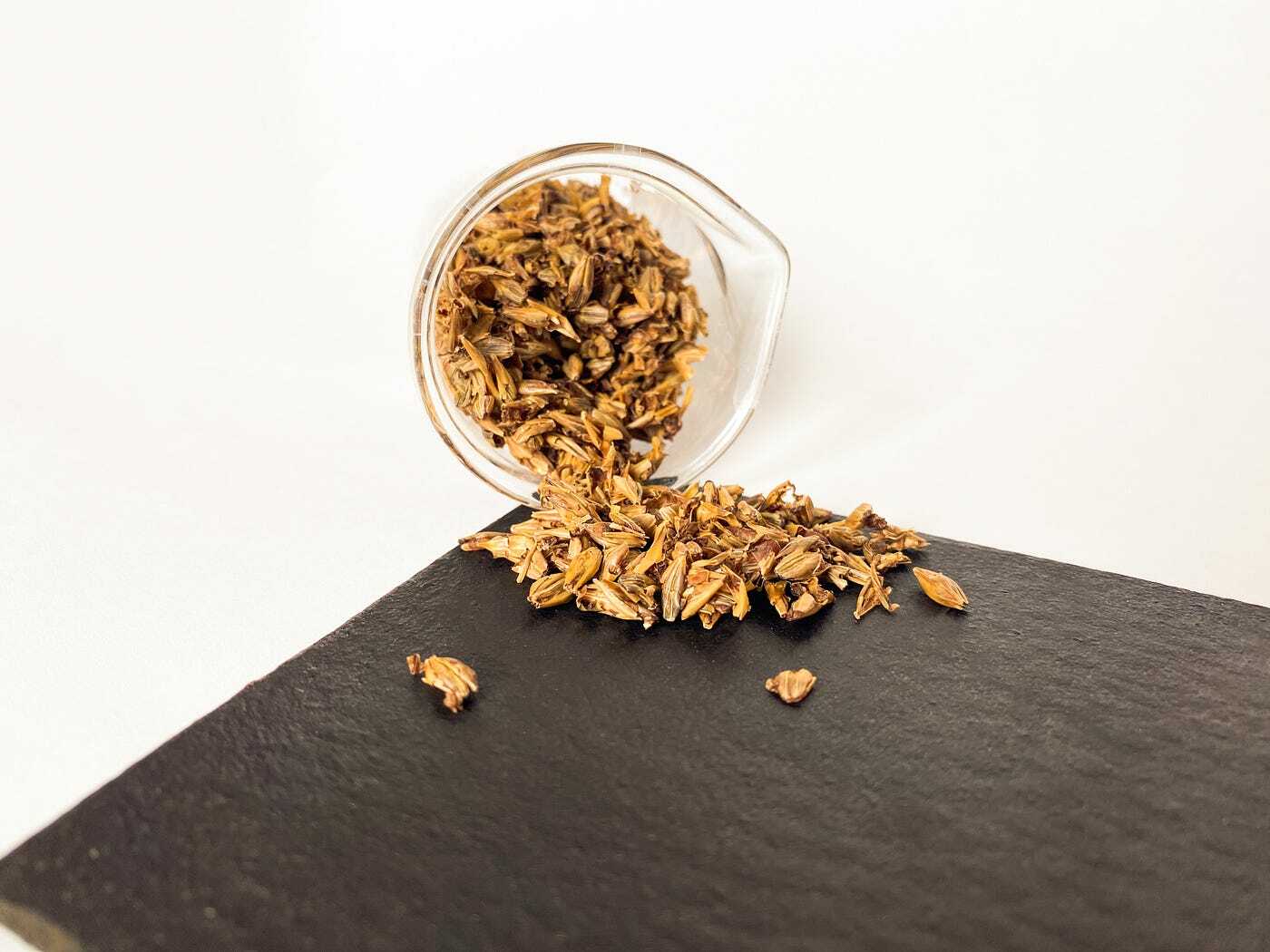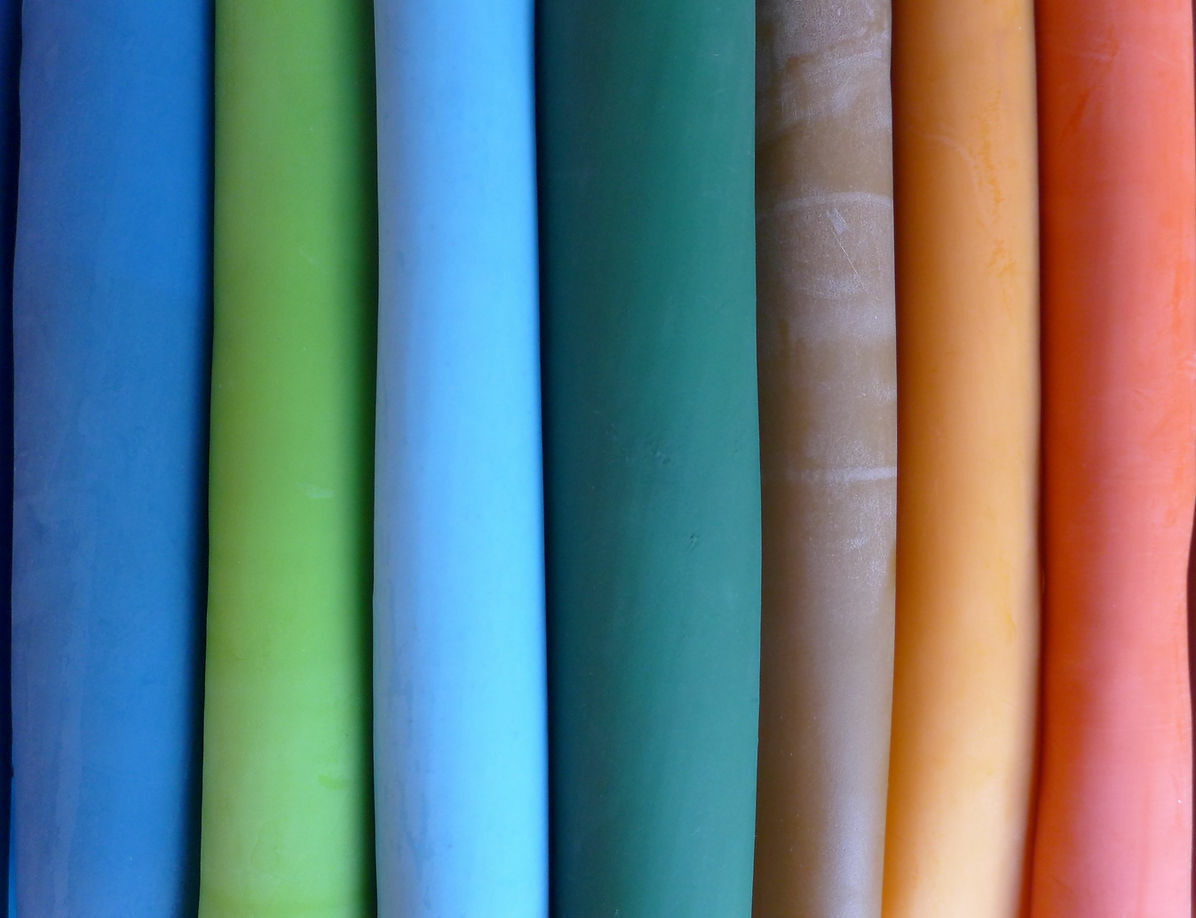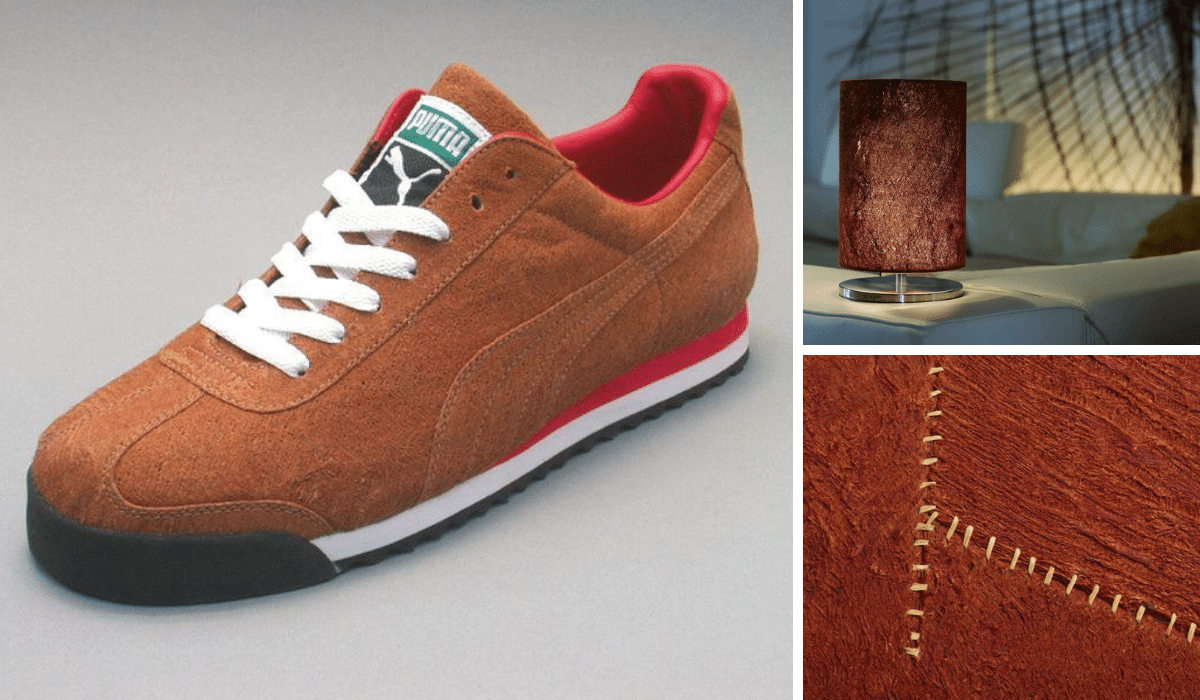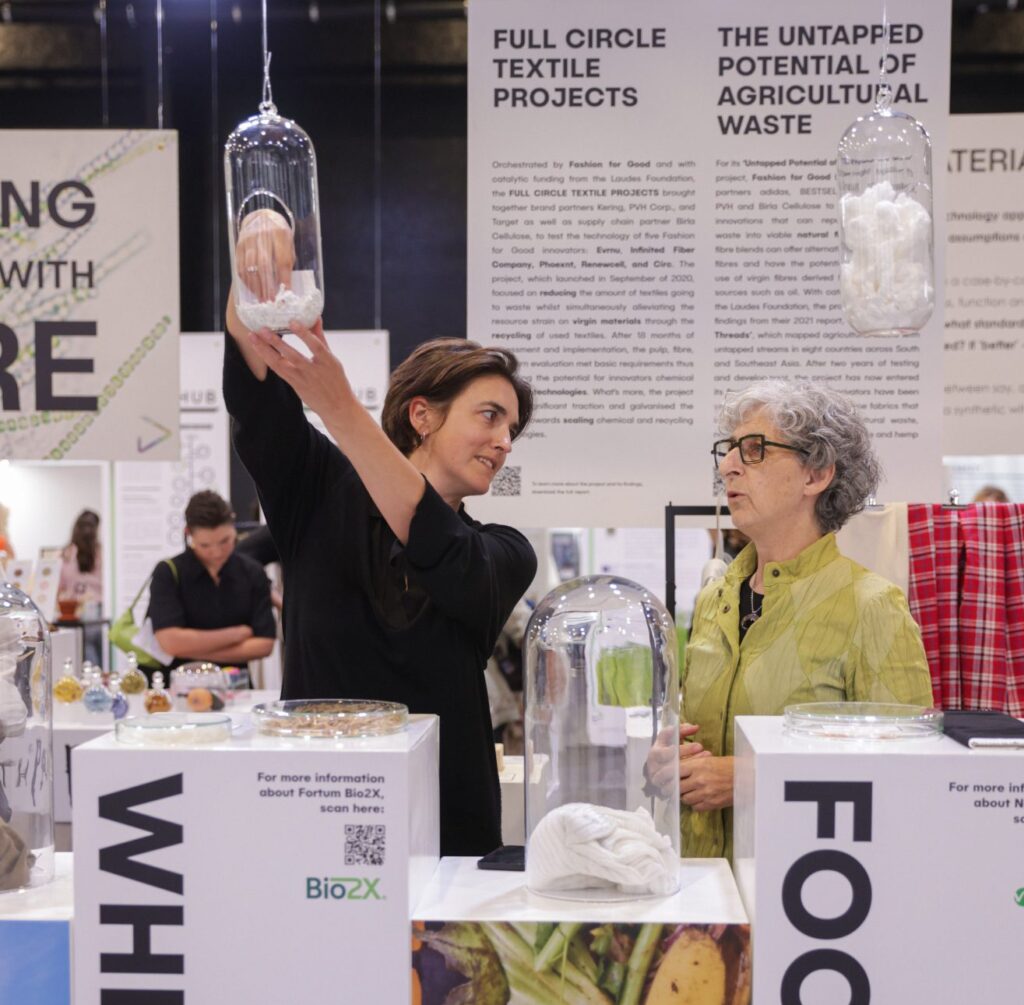From recycled plastics to organic fabrics, this year’s Future Fashion Expo in London showcased 10 000+ sourcing certified, sustainable material solutions that place the preservation and regeneration of nature, climate and biodiversity at centre stage.
Every year, our team visits this renowned event to discover new innovative textiles and materials that is one piece of the puzzle to the significant impacts on the planet, its people and nature that the fashion and textile industry is currently responsible for.
Every year, our team visits this renowned event to discover new innovative textiles and materials that is one piece of the puzzle to the significant impacts on the planet, its people and nature that the fashion and textile industry is currently responsible for.
What makes a material sustainable?
According to The Sustainable Angle, the organisation behind the Future Fashion Expo, materials’ sustainability is evaluated based on:
- Water: Materials created in systems that reduce, recycle, reuse and treat water to ensure water courses and groundwater are not depleted or polluted.
- Energy: Materials that help transition away from fossil fuels, both as a raw material, and as a source of energy, including materials grown with regenerative agricultural practices that have the potential to capture atmospheric carbon dioxide.
- Waste: Materials produced by reducing or eliminating waste at every stage in the textile production process, demonstrating exemplary recycling and re-use practices, following circular models and cradle to cradle principles.
- Biodiversity: Grown source materials created using organic and regenerative principles that respect and support biodiversity.
On top of these conditions, practices in regards to the production of materials should be also considered, such as whether the material is locally produced, recycled, organic, and its supply chain is certified and ethical.
Our Expo selection: top 3 sustainable materials
New Grain by Arda Biomaterials
New Grain™ is an animal and plastic free bio-leather derived from beer brewery waste.
The power of this material lies in the way it is made. Taking brewers’ spent grain, which would be considered waste, is the key ingredient in this cutting-edge material.
This leather alternative is vegan and even technically edible, as it’s made from plant proteins, plant fibres, and non-toxic chemicals. The end material is naturally a rich black, but can be lightened using a non-toxic process and then dyed into various shades while keeping the colour addition as sustainable as possible.

Wild Rubber by AMADEU Materials
This wildly grown rubber derived from trees found only in the Amazon rainforest is not only a versatile and useful material but also one of the keys to preserving the Amazon’s natural resources. That’s the reason why this material made the list.
From making a living out of wild rubber production, residents protect large areas of the native Amazon rainforest. Supporting the rainforest micro-economies means avoiding deforestation, mining, and cattle ranching.
In short, sustainable wild rubber helps to conserve the Amazon rainforest, its extraordinarily rich natural and cultural heritage as well as benefit local communities all at the same time.

Bark Cloth by BARKTEX
A non-woven fabric from the bark of trees is a textile with zero additives mainly sourced from Uganda using a traditional African craft.
This monomaterial contains the bark fibre only, which is chemically broken down to cellulose, hemicellulose, tannins and traces of minerals. The harvesting of the bark and its subsequent processing are carried out exclusively by skilled handiwork passed down from generation to generation.
From the production perspective, each square metre of Bark Cloth requires less than one litre of water. If you take into consideration the trees’ positive impact on the planet, Bark Cloth manufacturing can be considered CO2 positive.
That’s the future of textiles.

More on sustainable materials
If you want to dive deeper into the topic of sustainable materials, join one of the RethinkRebels Academy courses where the module on Sustainable Materials covers material trends, most common materials and its impact, as well as sustainable alternatives of textiles and other materials.
